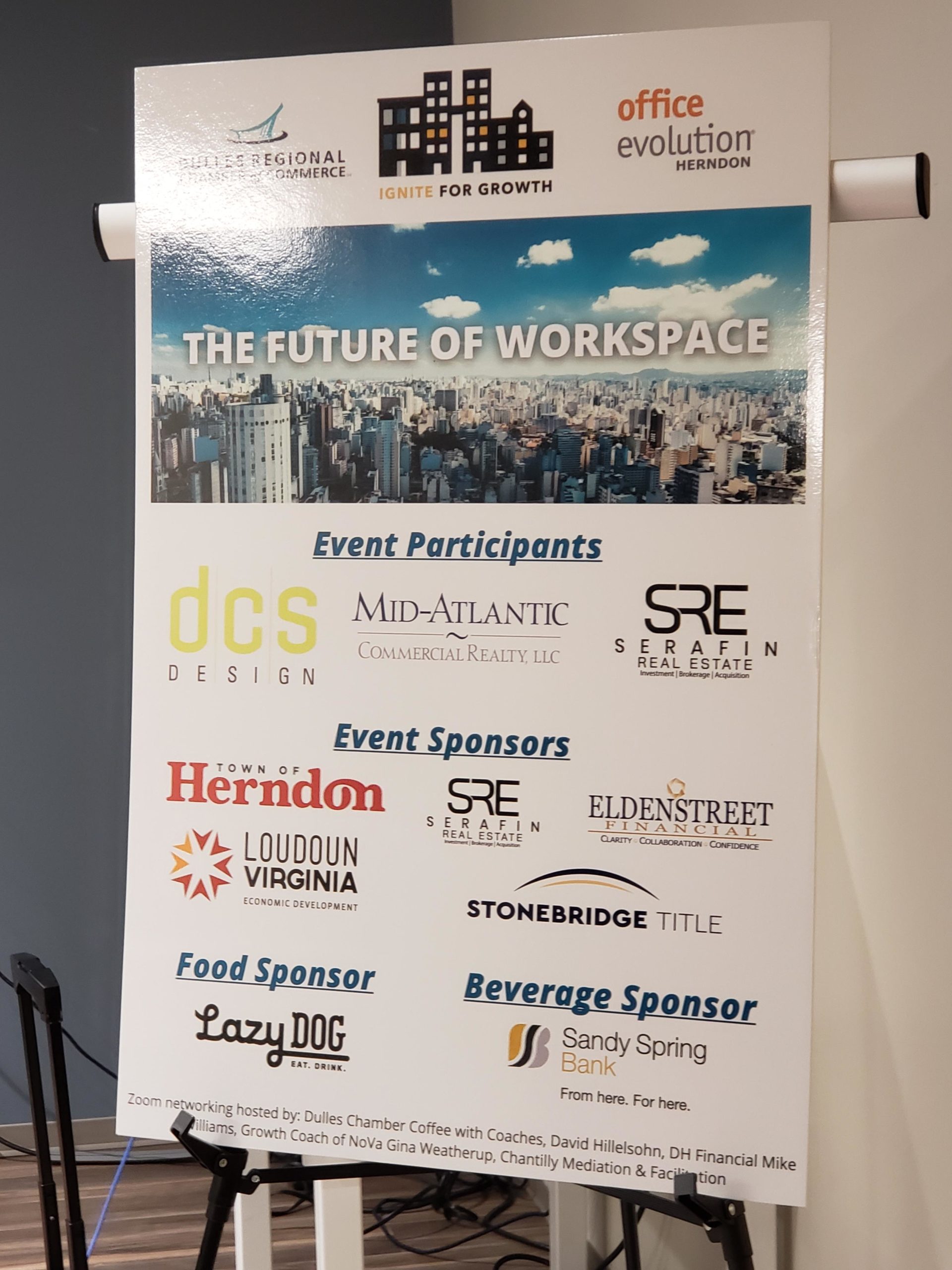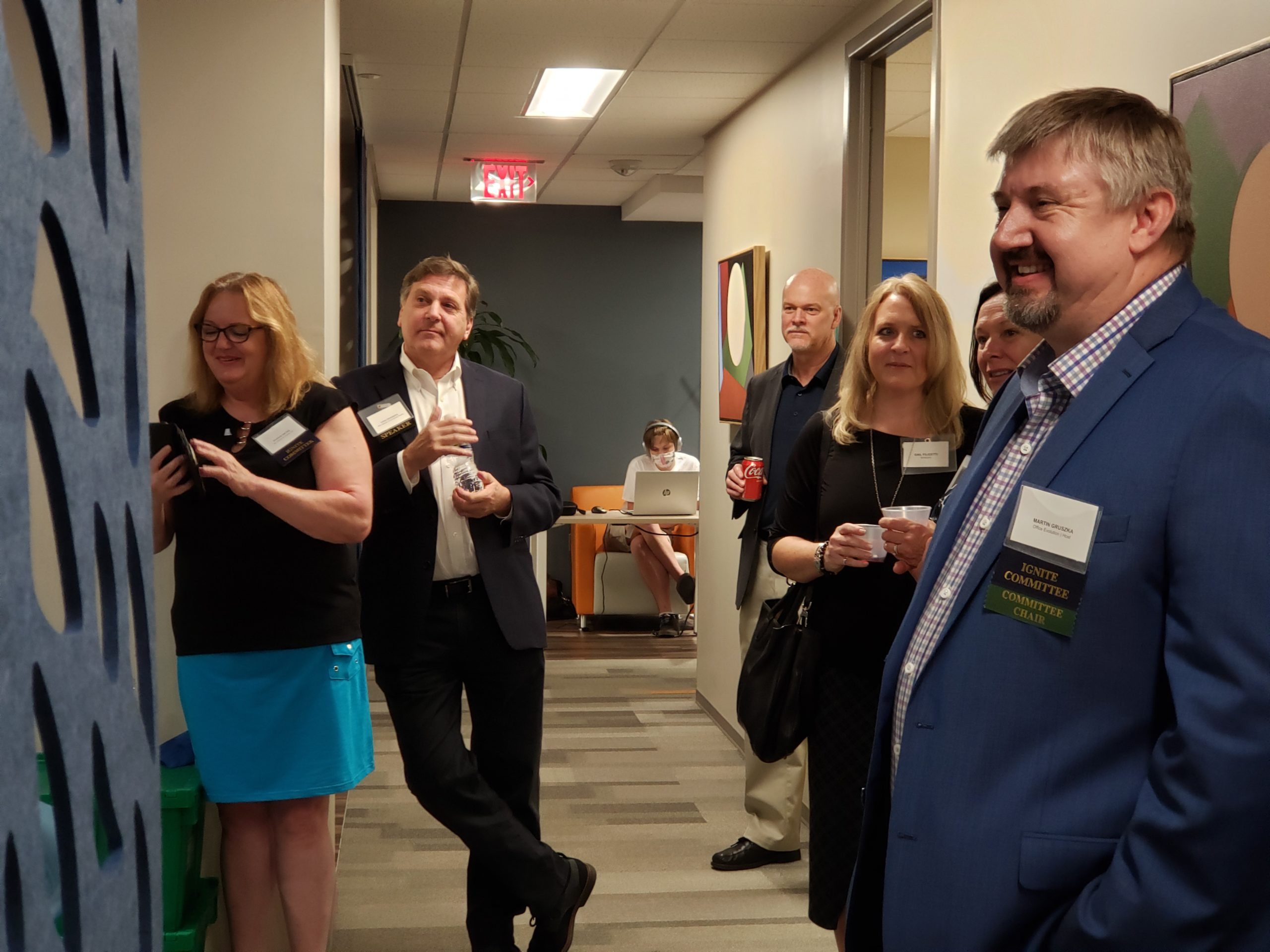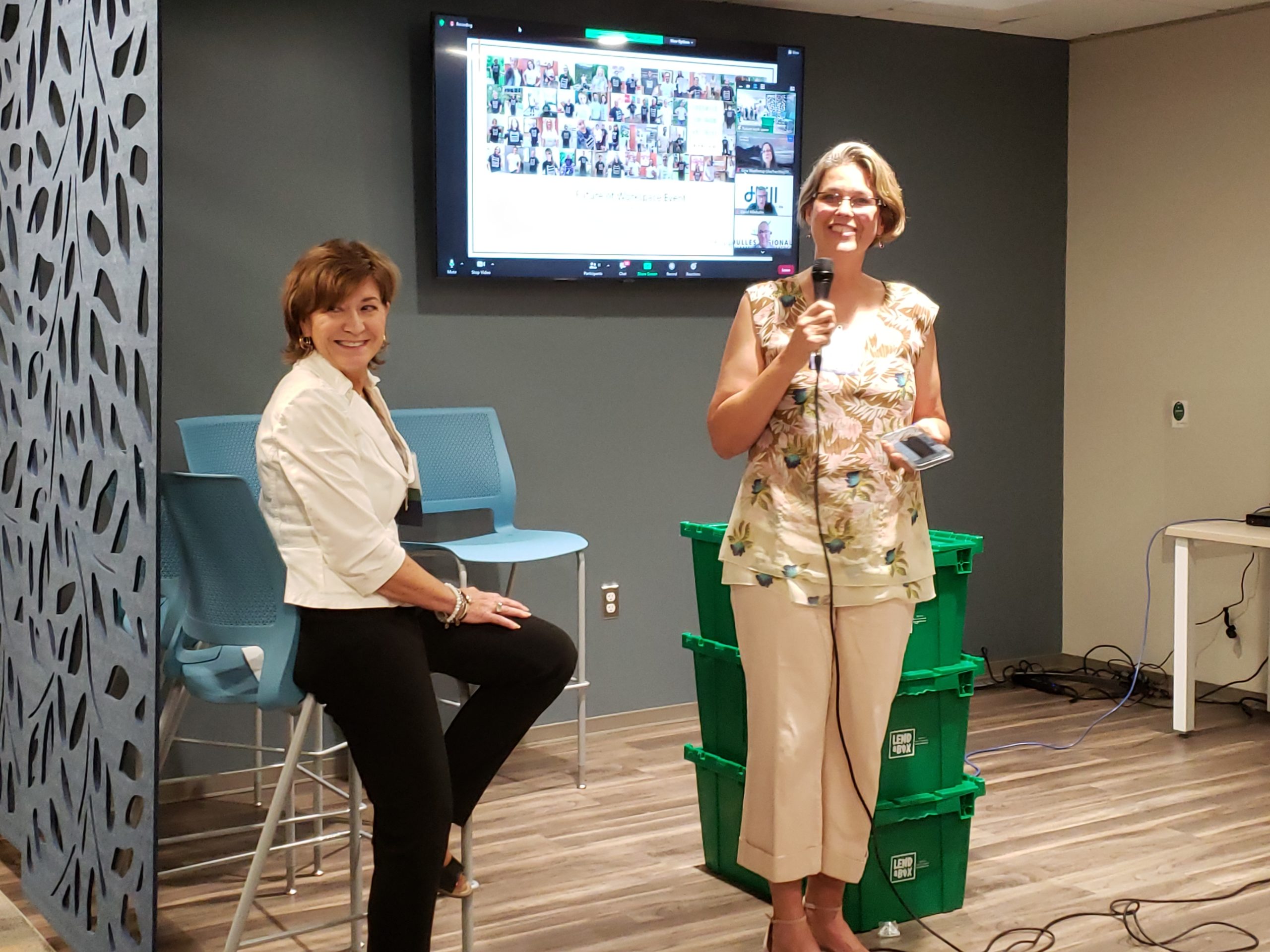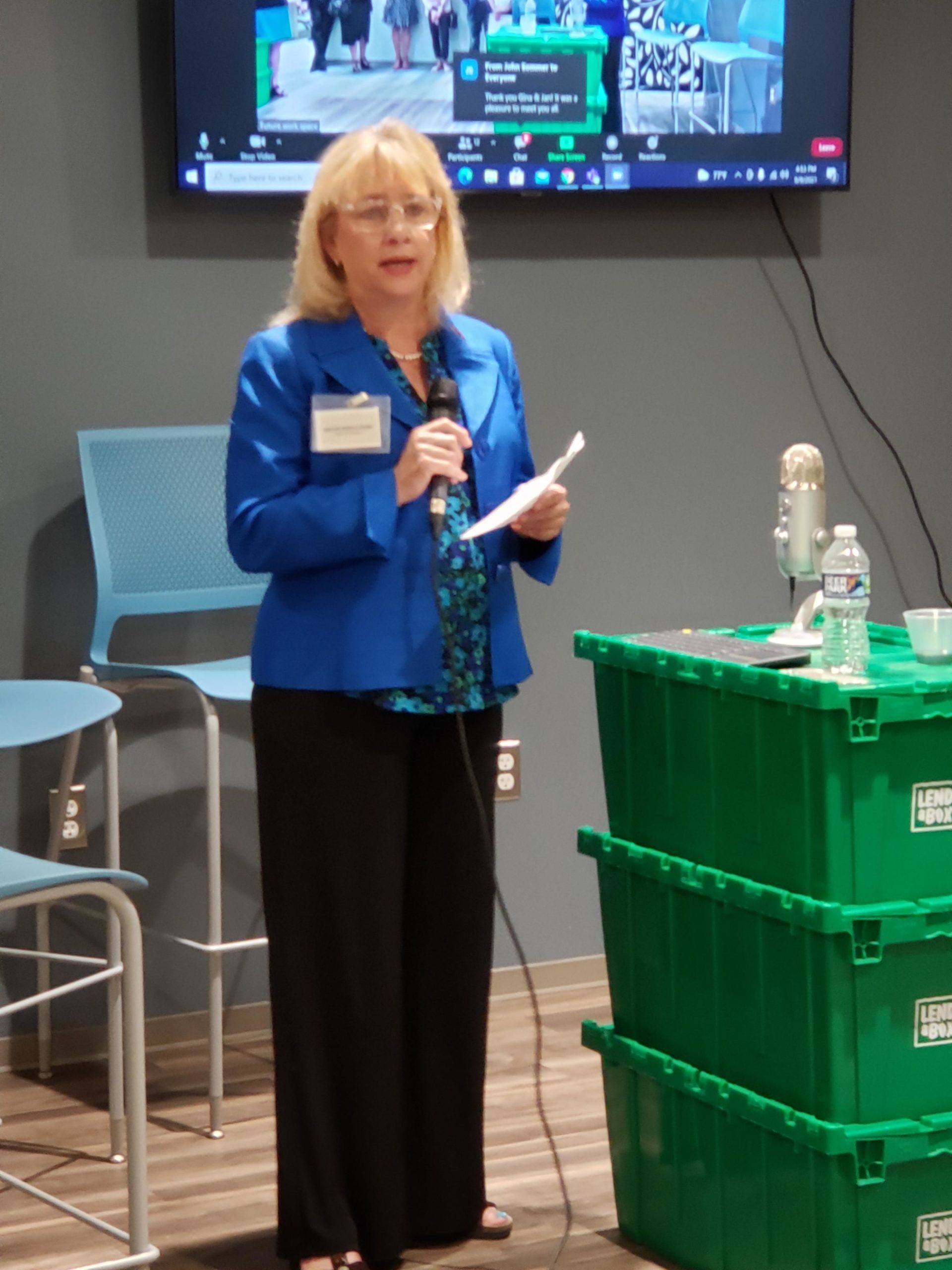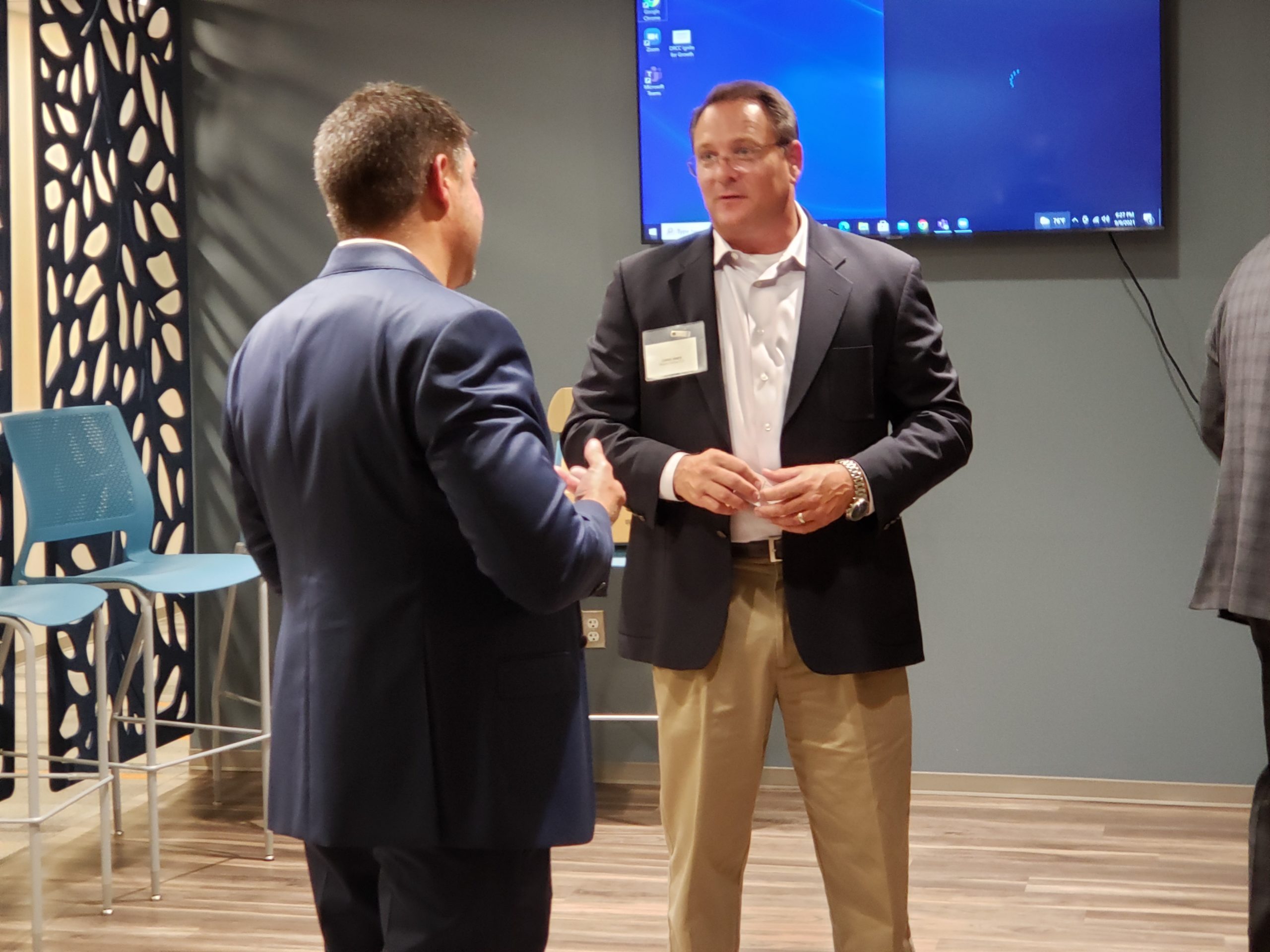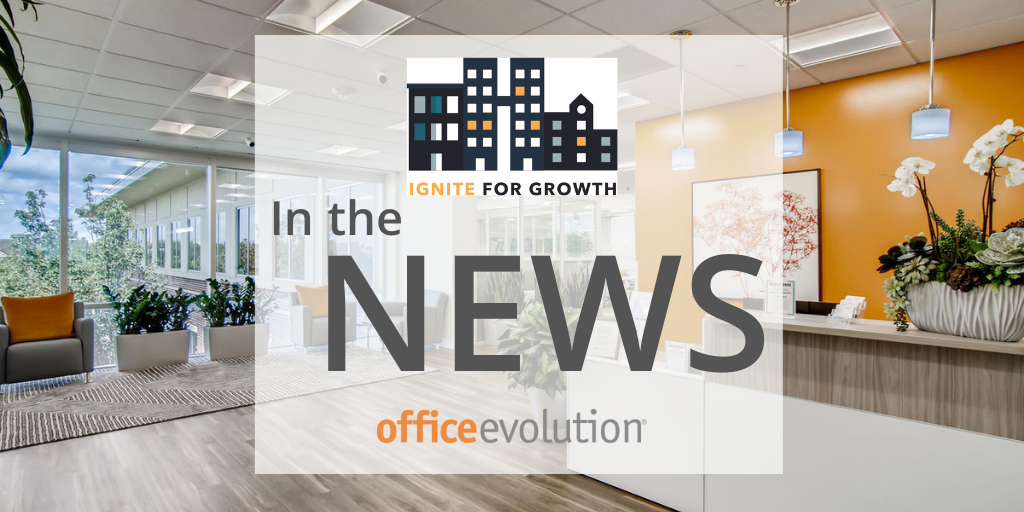
Envisioning the Workspace of the Future
The Future of Workspace, a seminar hosted by the Dulles (VA) Regional Chamber of Commerce on September 9, featured several experts with knowledge of commercial real estate in a lively conversation about the challenges of a post-Covid return to work.
The talk was staged at the Office Evolution location in Herndon, VA and hosted by owner Martin Gruszka. In keeping with the times, it was held both in person and via Zoom.
Office Evolution CEO Mark Hemmeter kicked off the presentation, offering his predictions for the future of the work environment. He outlined different ways that he sees businesses using flexible spaces such as those offered by Office Evolution: Renting space by the month, for example, or renting a single space used by several people on a rotating basis. While one to two year leases are still the norm, it’s not unusual for some entrepreneurs to work from home but opt for the convenience and more professional illusion of having Office Evolution handle phone and mail services.
Mark also stressed Office Evolution’s strategy and positioning, factors that make the company unique. “First and foremost, we focus on small businesses, those with just a few employees. We are not a great solution if you want to bring a whole company with 40 people over,” he said, adding that the company is also attracting more businesses with remote employees.
Unlike many commercial spaces, Office Evolution locations are in the suburban markets where the dreamers and doers that make up their membership actually live. And the Ohana (family) culture is a trademark that all locations strive for constantly.
Looking to the future, “the world continues to move toward on demand, liability-light, short term” space, says Mark. Acknowledging that shared space is currently less than four percent of the market, estimates are that it will reach 10 to 30 percent over the next few years. “But I’ve got to say that I think it will be higher. I think the future off our industry is very, very bright.”
Joanna de Castro of Davis Carter Scott Architects spoke about the future of workspace planning. Demand for spaces that give companies more control and flexibility, smaller sized spaces, as well as “active” space (think bike racks for those cycling to work) are trends she’s seeing, “There’s a desire to come back and reconnect,” she says.
Mid Atlantic Realty CEO Dana Weinberg outlined office trends from both the landlord and tenant perspective. With a commercial space vacancy rate over 27 percent, tenants currently have all the leverage. While seeing more activity now, he predicts the market for commercial space will remain slow for years.
As for real estate investment sales, the best recent year was 2019, noted Joe Serafin of Serafin Real Estate. That stopped cold in March 2020, but rebounded in the fourth quarter of that year. The reason: a combination of the oversupply of money plus low interest rates.
A question and answer period followed the presentation, which was attended by over 50 people.
